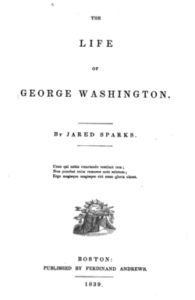
 (This is the fifth in a series of posts on Fairey v. Associated Press. See below for other posts in the series.)
(This is the fifth in a series of posts on Fairey v. Associated Press. See below for other posts in the series.)
Today, the AP filed its response to the Fairey complaint—and as I predicted, the AP is asserting counterclaims for copyright infringement. Like Fairey’s complaint, the AP’s counterclaims go well beyond merely stating a cause of action, and attempt to win the battle for positive publicity as well. (Note to my Civ Pro students: Take a look at these pleadings if you want to see skillful examples of what I was talking about when I mentioned complaints that go beyond a “short and plain statement.”) Both sides in this case have their eye not just on the law, but on the ordinary, nonlegal intuitions of the press, the judge, the jury, scholars, and bloggers such as myself. (Indeed, I got a copy of AP’s press release by email. To Fairey’s attorneys: Feel free to reciprocate!)
I have a few quick observations.
1. We have the AP’s answers to the questions I raised in earlier posts: who owns the copyright in the photo, and has it been registered? AP asserts that it owns the copyright, and as Peter Hirtle suggested in a comment earlier, it’s registered in Registration No. VA 1-356-885. (Answer ¶ 96.) I still have questions about that registration, which is not attached to the counterclaims, but I imagine we’ll find out more about it when Fairey’s attorneys get their hands on it.
2. AP is playing hardball. A prominent theme in the counterclaims is that Fairey is a copyright hypocrite, asserting a broad right to appropriate others’ art, but a narrow right for others to appropriate his own. The counterclaims go into some detail, for example, on the dispute between Fairey and Baxter Orr. Indeed, the AP counterclaims feature the too-good-to-be-true moment of the AP criticizing Fairey for asserting overreaching copyright claims in that dispute. Apparently, Fairey’s attorneys asserted common-law copyright over their cease and desist letters to Orr, and demanded that he stop distributing them over the Internet. (Answer ¶ 121.)
My take: While fascinating and humorous, I don’t think this history is technically relevant, just as I don’t think the method by which Fairey created the poster is technically relevant; but again it may as a practical matter sway sympathies against Fairey. Also, Fairey’s deposition in this case should be really interesting. I’m reminded of Joseph Welch’s cross-examination of Joe McCarthy at the Army-McCarthy hearings on the substance of his oath to tell “the whole truth” when McCarthy refused to answer some questions. (I’m NOT comparing Fairey to McCarthy in ANY other way!)
A second prominent theme in the counterclaims is that Fairey has a pattern and practice of appropriating others’ art and using it as the basis for his own, a legal criticism that mirrors the artistic criticism made by Mark Vallen. On this second theme, I’m not sure what to think. If successful, it may demonstrate a pattern and practice of infringement on Fairey’s part. But it introduces the debate over “appropriation art” into the proceedings, which the Second Circuit has already indicated may be a legitimate art form. See Blanch v. Koons, 467 F.3d 244 (2d Cir. 2006). Fairey may very well have a better fair use argument for some of those other works than he does for the poster here. Bringing up Fairey’s entire corpus could muddy the waters to his benefit.
3. There are big issues afoot here. Fairey’s complaint implicitly challenges the very idea of copyright in news photographs. AP has a long section of the counterclaims devoted to what’s creative about news photography in general, and shorter section about this photo in particular. One tidbit that I had missed: I had suspected that the out-of-focus background in the photo was intentional, and apparently in an interview with NPR, Mannie Garcia confirmed that that was a deliberate choice. (Answer ¶ 97.)
On the other side, AP is casting a broad net over all appropriation art in its counterclaims, rather than specifically attacking the purpose of this poster. As I mentioned, I’m not sure I would make the same choice as the copyright owner here. I think there might be hay to be made on whether the poster really is “appropriation art,” in the sense of art that by appropriating makes some comment on the original, or at least related to the original. But I recognize that that argument is not completely straightforward, either, insofar as it would require a determination on what the intended purpose of the poster is.
4. The counterclaims unsurprisingly note Fairey’s merchandising arm. I suspect Fairey’s claim that he is selling the posters for “only” $45 each is not going to go far, and his attorneys are going to have to fall back on the argument that commercial purpose is not determinative of fair use. AP makes its own attempt at claiming the mantle of warm and fuzzy feelings by alleging that, if a settlement had gone through, it would have donated the fees for “past use” to “The AP Emergency Relief Fund,” a charity that assists AP staffers and their families who are victims of disasters. (Answer ¶¶ 80, 146.)
5. AP comes right out and alleges, on information and belief, that Fairey “deliberately misrepresent[ed]” the source of the poster. (Answer ¶ 142.) My thoughts on this issue are here. I expect this will be a significant point of contention. Note to Fairey: it’s not too late to amend the complaint!
6. My “paint-by-numbers” analogy makes an appearance in the counterclaims. (Answer ¶ 130.) Either AP’s outside counsel read this blog, or it’s a case of independent creation, so to speak.
7. There’s a claim for removal of Copyright Management Information under Section 1202 of the DMCA. Now, suddenly, it seems like the process by which Fairey created the poster, at least digital versions of the poster image, might actually matter. If it was created by hand, then that wouldn’t have involved “removal” or “alteration” of the CMI embedded in the original JPEG file. But if it was copied and edited, then it may have. AP would still need to prove that the removal was intentional, though, and here’s a question I don’t know the answer to: what happens to all that metadata if you copy a photo, edit it in Photoshop, and then use the “Save As…” command?
8. I’m not sure I buy this series of claims: AP is negotiating with Fairey over a settlement of their dispute. “In the meantime,” they check out the website of his lawyers—the Stanford Fair Use Project—and note the statement that the Project likes to “defend ‘fair use’ rights . . . through declaratory judgement actions.” (Answer ¶ 150.) They grow concerned. So when Fairey’s lawyers “engage[ ] in further delay,” AP’s in-house counsel “reluctantly notif[ies] [Fairey]’s counsel that if the matter was not amicably resolved, it would bring legal action against Plaintiffs in the Southern District of New York on Tuesday afternoon . . . .” (Answer ¶ 151.) And thereby cinched Fairey’s standing to sue under the Declaratory Judgment Act. I think I’m missing something in the chain of the reasoning there.
Other posts in this series:
- Why did Fairey file in the Southern District of New York?
- Does AP actually own the copyright in the Garcia photo?
- Is Fairey’s suit doomed to fail before it even gets off the ground?
- What’s the “original” photo?
- What does the complaint say about the poster creation process?
- AP Strikes Back—This post
- What if anything is copyrightable about the photo? Does the poster infringe on that?
- Is the poster subject to a fair use defense?


EFF has a blog post on the DMCA claims by Senior Staff Attorney Fred Von Lohmann:
http://www.eff.org/deeplinks/2009/03/ap-uses-dmca-intimidate-hope-artist
H.
The AP has a policy of not using photos which have been altered in any way. In fact they banned using armed forces photos after a background was removed from the photo of a woman general and replaced with an American flag. Since Mr.Fairey created an image the AP by its own policy can not use does this strengthen his claim of fair use?
BBC report on the general’s portrait photo: http://news.bbc.co.uk/2/hi/americas/7738342.stm.
Thanks Charlie for that link. One of the issues that will come up if and when the court gets to Fairey’s fair use defense is whether Fairey’s poster has the potential to affect the market for the original photograph. The question there will be not just how AP itself uses its photographs, but whether they sell the right to make posters like Fairey’s. So while the AP might have a policy of not using altered photographs in their primary business of selling photographs to newspapers, they also have a secondary business of selling photographs to other people, including in the form of tote bags and the like (see p.24 of AP’s answer and counterclaims). Have they ever licensed anything like Fairey’s poster? I don’t know the answer to that; I’m not sure the tote bag proves that Fairey’s poster deprived them of some market that they are in or are likely to enter.
In answer to your question about the fate of Copyright Management Information (IPTC metadata) embedded in a digital image file that has been edited in Photoshop and saved out as a JPEG file, the metadata survives this process. It must be deliberately removed by going into Photoshop’s File > File Info dialogue box and deleted manually.
Additionally, if the “Copyrighted” status line in the IPTC panel within Photoshop (or Adobe Bridge or Adobe Lightroom or Apple Aperture or Microsoft Expression Media) has been checked ON, the © symbol appears in the image title bar in Photoshop, serving notice to any user of the image’s copyright status (although not necessarily its registration status).
–Bob Ware
Professor, Photography Dept
Santa Monca College
Thanks Bob for that information, that’s very interesting.
I have read this 5th installment and some of #2: who owns the copyright. Push the shutter button on a camera and you own the copyright, period. The only way the AP can own this copyright is if 1) the agreement was signed before the shutter was clicked or 2) he is an employee on the payroll with benefits or 3) signs over a transfer of ownership/copyright. Now, why can’t AP sue regardless of who owns the copyright? If Garcia has images with AP and they are representing/licensing these images and an infringement happens due to a client of AP’s, then why couldn’t they sue for infringement? They have Garcia’s image (which I say is his) and they distributed it to their client, then it should be their fight to recoup Garcia’s money? NO???? They are representing him. However, does Garcia then have to split the award with AP?
And finally any metadata stripping on anyone’s part should be considered copyright infringement period!! Don’t you think? There is no reason on earth that could justify stripping visual content metadata, except fraud. And cropping of an image that has a copyright mark is clear violation–end of story. I have been a long-time member of the ASMP and the ideas here have been learned via their endeavor to preserve artists rights!! So are you telling me that the statements I have just made are not legally true. This is a sad state of affairs if that is the case and we as artists are going to need to start being more assertive and say No and call people when violations are discovered. I would really like to hear the legal reasons as to why all of my statements are not simple LAW????